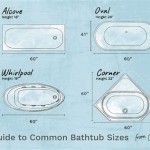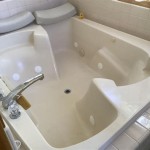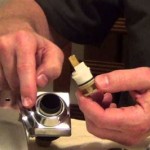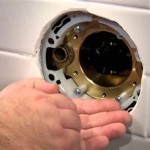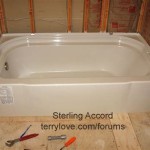How to Remove a Pop-Up Drain Stopper From a Bathtub
The pop-up drain stopper is a common mechanism found in many bathtubs. It's designed for ease of use, allowing individuals to quickly open and close the drain with a simple press or lever. However, when these stoppers malfunction, need cleaning, or require replacement, understanding how to remove them becomes essential. This article provides a comprehensive guide to removing a pop-up drain stopper from a bathtub, covering various types and common removal methods.
Before beginning any work on a bathtub drain, it is imperative to consider safety precautions. Water should be completely drained from the tub. Protective gloves should be worn to protect hands from potential exposure to bacteria and sharp edges. Appropriate lighting is also essential to ensure clear visibility of the drain components. Furthermore, having the necessary tools readily available will streamline the process and minimize potential frustration.
Identifying the Type of Pop-Up Drain Stopper
Several variations of pop-up drain stoppers exist. Recognizing the specific type installed in the bathtub is the first step in a successful removal. The most common types include:
- Lift-and-Turn Stoppers: These stoppers typically have a knob on top that can be both pushed down to close the drain and rotated to adjust or remove the stopper.
- Push-and-Pull Stoppers: These stoppers operate similarly to lift-and-turn stoppers, but instead of rotating, they are pulled up to open the drain and pushed down to close it. Removal often involves unscrewing or disengaging a mechanism beneath the drain.
- Toe-Touch Stoppers: These stoppers are activated by pressing down on the top of the stopper with a toe. Repeated pressing toggles between open and closed positions. The removal process usually involves unscrewing the stopper or manipulating a linkage system.
- Trip-Lever Stoppers: These stoppers are connected to a lever located on the overflow plate of the bathtub. Activating the lever raises or lowers the stopper. Removal generally involves accessing the linkage through the overflow plate.
Familiarizing oneself with the specific stopper type significantly simplifies the removal process, preventing unnecessary force or damage to the drain assembly.
Removing a Lift-and-Turn or Push-and-Pull Stopper
Removing a lift-and-turn or push-and-pull stopper generally follows a consistent procedure. The tools needed are typically minimal, often only requiring a flathead screwdriver or a small Allen wrench, depending on the specific design of the stopper. The steps are as follows:
- Locate the Set Screw: Examine the base of the stopper near the top. A small set screw may be visible. This screw secures the stopper to the internal mechanism.
- Loosen the Set Screw: If a set screw is present, use a flathead screwdriver or Allen wrench to carefully loosen it. Do not remove the screw entirely, as this can make reassembly more difficult. Simply loosen it enough to allow the stopper to be freed from the drain.
- Unscrew or Pull the Stopper: Once the set screw is loosened, attempt to unscrew the stopper by rotating it counterclockwise. If there is no set screw or if the stopper doesn't unscrew, try gently pulling it straight up. It might be held in place by a rubber O-ring or other friction-based components, which require gentle but firm pressure.
- Inspect and Clean (Optional): After removing the stopper, inspect it for any damage or debris. Clean the stopper and the drain opening to remove hair, soap scum, and other buildup. This can often improve the drain's functionality.
If the stopper is particularly stubborn, applying a small amount of penetrating oil to the base of the stopper can help to loosen any corrosion or buildup that may be hindering its removal. Allow the oil to sit for a few minutes before attempting to unscrew or pull the stopper again.
Removing a Toe-Touch Stopper
Toe-touch stoppers, also known as foot-operated stoppers, require a slightly different approach for removal. These stoppers often incorporate a threaded design or a more intricate linkage mechanism. Common steps for removal include:
- Unscrew the Stopper: The primary removal method for a toe-touch stopper is to unscrew it. Grip the top of the stopper firmly and rotate it counterclockwise. The stopper may be tight initially, requiring a significant amount of force. Using rubber gloves can improve grip and make the process easier.
- Accessing the Linkage (If Necessary): If the stopper cannot be unscrewed directly, accessing the linkage from underneath the stopper may be required. Some toe-touch stoppers have a removable cover on top that reveals a screw or other fastener. Removing this cover will allow access to the internal components.
- Removing the Linkage: Once the access cover is removed, carefully examine the linkage mechanism. There may be screws, clips, or other fasteners holding the stopper in place. Disconnect these fasteners to free the stopper. Documenting the order in which the components are removed can be helpful for reassembly.
- Inspect and Clean (Optional): Like other stopper types, inspecting and cleaning the toe-touch stopper and drain opening after removal is recommended. This can help to prevent future clogs and ensure smooth operation.
If the thread is corroded, gently applying penetrating oil to the base of the stopper and allowing it to soak in can greatly aid in the unscrewing process. Applying heat using a hairdryer (carefully, to avoid damage to the tub finish) can also sometimes help loosen a stuck stopper.
Removing a Trip-Lever Stopper
Trip-lever stoppers, which are controlled by a lever located near the overflow drain, are connected to a linkage system that runs through the overflow pipe to the stopper itself. Removing this type of stopper requires accessing and manipulating this linkage. The steps involved are:
- Remove the Overflow Plate: Locate the overflow plate, which is typically a circular or rectangular plate with a lever attached to it. Using a screwdriver, remove the screws that secure the overflow plate to the bathtub.
- Pull Out the Linkage: Once the overflow plate is removed, gently pull out the linkage assembly. This assembly consists of a rod connected to the stopper. Be careful not to force the linkage, as this could damage the components.
- Detach the Stopper: The stopper is usually attached to the linkage by a hook or a ball-and-socket joint. Detach the stopper from the linkage. The method of detachment will vary depending on the design of the stopper.
- Remove the Stopper from the Drain: With the stopper detached from the linkage, it can be removed from the drain opening. This may require some maneuvering to work the stopper past obstructions in the drain pipe.
- Inspect and Clean (Optional): Inspect and clean both the stopper and the linkage assembly. Remove any hair, soap scum, or other debris. Check the linkage for signs of wear or damage.
If the linkage is extremely rusted or corroded, replacement of the entire assembly might be necessary. Replacement kits are readily available at most hardware stores and come with detailed instructions for installation.
In cases where the stopper is severely corroded or lodged in the drain, more aggressive methods may be necessary. Using a pair of pliers or a drain snake can sometimes help to dislodge a stubborn stopper. However, caution should be exercised to avoid damaging the drain or the bathtub finish. Alternatively, consulting with a professional plumber might be a prudent decision to avoid further complications.
Upon successful removal of the pop-up drain stopper, reassembly is the next crucial step. Ensure all parts are thoroughly cleaned and reassembled in the reverse order of removal. Tighten screws and fasteners securely, but avoid over-tightening, which can damage the drain components. Test the functionality of the stopper by filling the bathtub with a small amount of water and checking for leaks. If leaks are detected, double-check the connections and tighten any loose fittings. In cases where the original stopper is being replaced, follow the manufacturer's instructions for installing the new stopper. Precise installation is essential for proper drainage and to prevent water damage.

So Easy How To Remove A Watco Pop Up Drain Plug
:max_bytes(150000):strip_icc()/remove-tub-stopper-clear-a-drain-2718786-18-831ab829be914b8c9765cfd14d8f993a.jpg?strip=all)
How To Remove 6 Diffe Kinds Of Drain Stoppers

How To Remove Pop Up Tub Stopper Easy Method

How To Remove A Pop Up Tub Drain Plug Stopper Easy No Tools Needed
:max_bytes(150000):strip_icc()/remove-tub-stopper-clear-a-drain-2718786-06-b651d62bfb29494a824821126579e750.jpg?strip=all)
How To Remove 6 Diffe Kinds Of Drain Stoppers
/remove-tub-stopper-clear-a-drain-2718786-21-7650d24dc2ca4ead83eb60a6e828c5da.jpg?strip=all)
How To Remove 6 Diffe Kinds Of Drain Stoppers

How To Remove A Bathtub Drain Stopper
:max_bytes(150000):strip_icc()/remove-tub-stopper-clear-a-drain-2718786-hero-425b2598739f43718b6905767d2616d8.jpg?strip=all)
How To Remove 6 Diffe Kinds Of Drain Stoppers

Remove Pop Up Bath Tub Drain Stopper 3 Ways

How To Remove A Bathtub Drain The Home Depot

